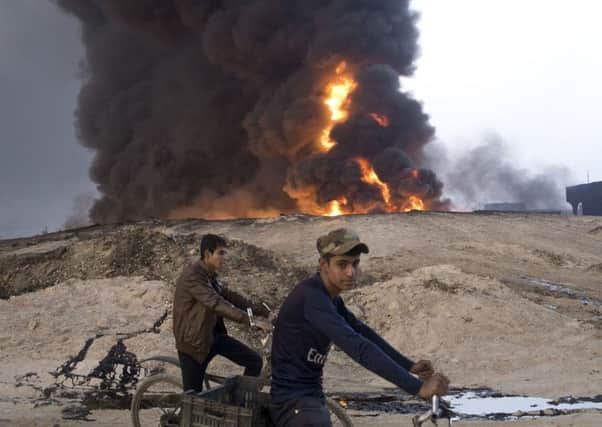Innocent Iraqi citizens suffering toxic fallout from Mosul offensive


In recent days 19 oil wells have been set ablaze by armed groups near Al Qayyarah, south-east of the city.
Burning crude oil produces a wide range of pollutants, including soot and gases that cause health problems such as skin irritation and shortness of breath.
Advertisement
Hide AdAdvertisement
Hide AdStockpiles of sulphur dioxide stored at a factory caught fire late last week, leading to a large toxic cloud spreading across dozens of kilometres.
Iraqi health services, with support from the World Health Organisation (WHO), have treated more than 1,000 cases of suffocation as a result.
And in the past few days around 100 civilians have been forced to seek medical help as a result of a chlorine gas leak at a water plant that was reportedly affected by fighting.
Mosul has been governed by IS since June 2014 and is the last major city in Iraq still under the jihadists’ control.
Up to 5,000 IS fighters were thought to be in Mosul before Iraqi forces launched an offensive to retake the city last week.
It’s thought up to 900 have been killed since the battle began, though commanders fear securing Mosul could take weeks – or even months.
Experts from the United Nations (UN) Environment Programme say recent events highlight the need to prepare for environmental health impacts as part of humanitarian action and crisis response.
“This is sadly just the latest episode in what has been the wholesale destruction of Iraq’s environment over several decades – from the draining of the marshlands to the contamination of land and the collapse of environmental management systems,” said UN environment chief Erik Solheim.
Advertisement
Hide AdAdvertisement
Hide Ad“This ongoing ecocide is a recipe for a prolonged disaster. It makes living conditions dangerous and miserable, if not impossible.
“It will push countless people to join the unprecedented global refugee population.
“That’s why the environment needs to be placed at the centre of crisis response, conflict prevention and conflict resolution.”
Minimising environmental damage from armed conflict is a priority for the organisation, which is working with partners in Iraq, including the WHO and other UN agencies. Satellite mapping of smoke plumes have been carried out to minimise harmful impacts.